Join the VIP Teacher Club!
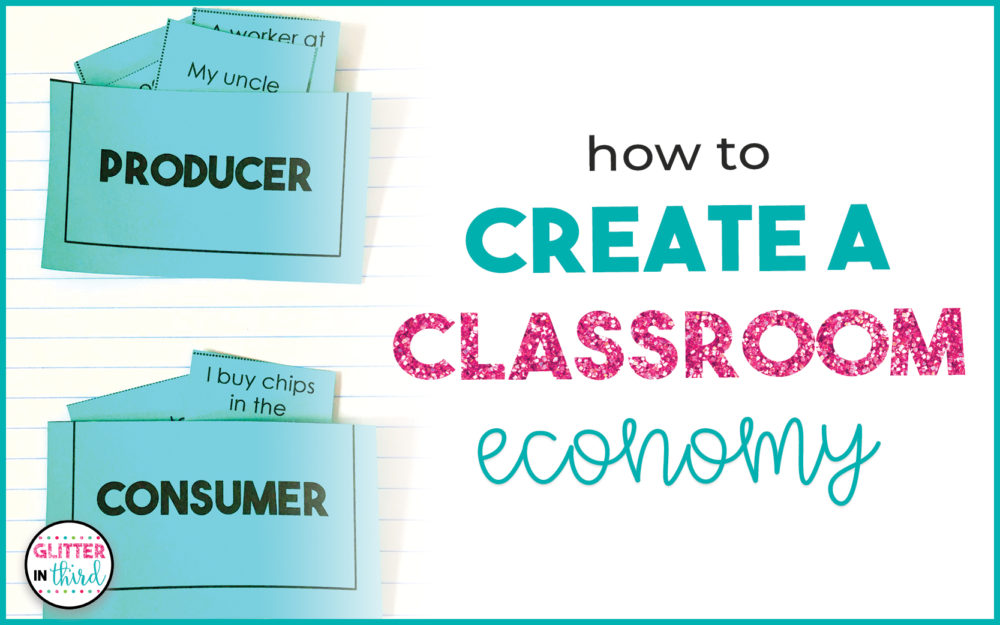
Looking for 3rd-grade economics activities? When I was in the classroom, teaching economics was one of my absolute favorite topic areas. There are so many ways to incorporate real-world experiences into the area of economics, and the questions and discussion that came from those experiences made every lesson even better!
Kids love to feel grown-up. They love to feel like they understand what their parents/guardians go through on a typical day as an adult. 🙂 They get excited about what it all entails to start a business, pay bills, grocery shop, and make money. They love putting in hard work to create a product or service for their peers and then see that hard work pay off through profit! This is definitely the reason why I love creating a classroom economy and going “all in” with this unit. I can help you do the same!
Here are a few of my favorite products and activities to get started creating your classroom economy:

Before getting into any hefty classroom economy projects, I encourage you to start with teaching the basics.
This digital economics bundle comes with 6 different resources to help you build a foundation of the economy. Included are:

The activities will help the students understand the initial concept of each topic by using basic drag-and-drop features and will then lead them to identify, as well as explain, these concepts with short answer questions.
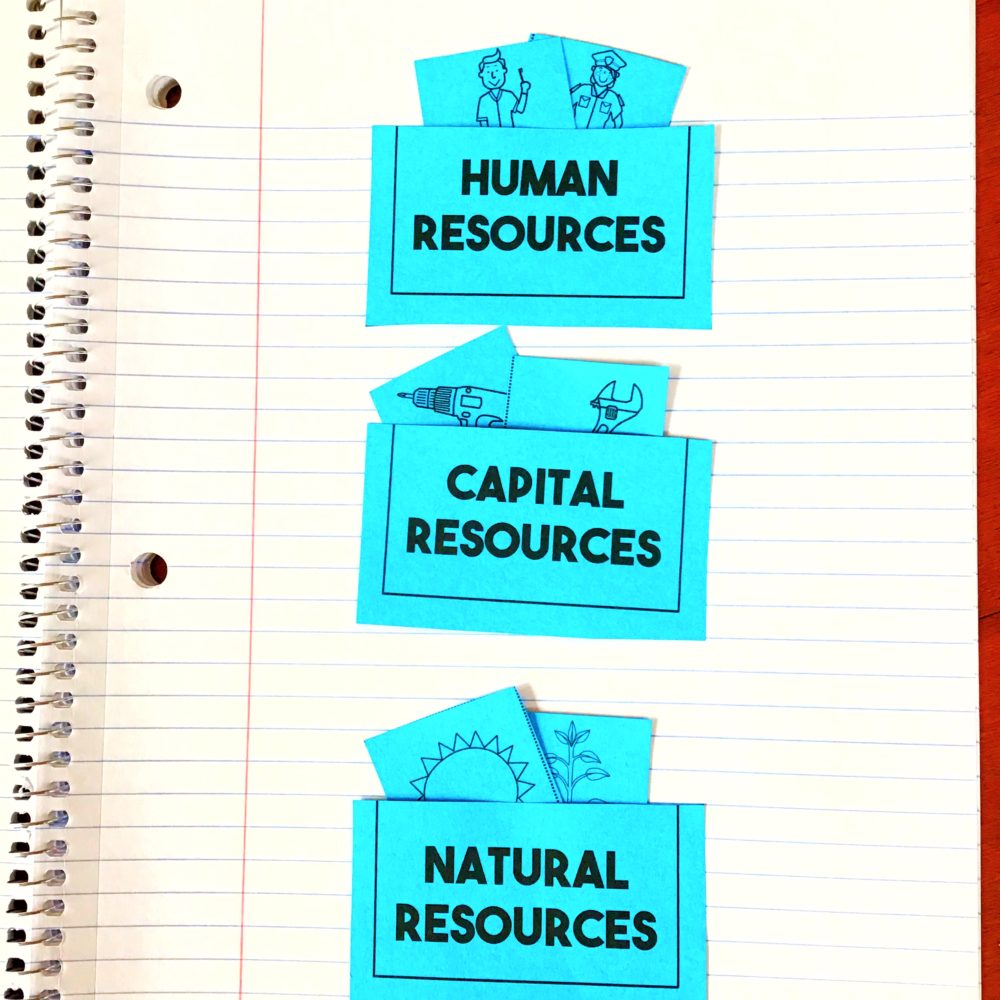
I love this interactive notebook because of its “real life” questions.
The topics are complementary to those of the Google Classroom bundle, but of course all different content. 🙂
Students will cut and sort to identify differences in concepts, fill in the blank to understand economic theories, as well as brainstorm their own ideas that correlate with the topics.
This interactive notebook is so helpful for generating questions and discussion throughout the entire classroom.

For example, we can start by discussing the differences between goods and services or consumers and producers with the notebook topics, which really gives the kids a basic understanding. Then we can move to brainstorming goods and services in our school, as well as producers and consumers in our community.
The connections your students will begin to make will be exciting!
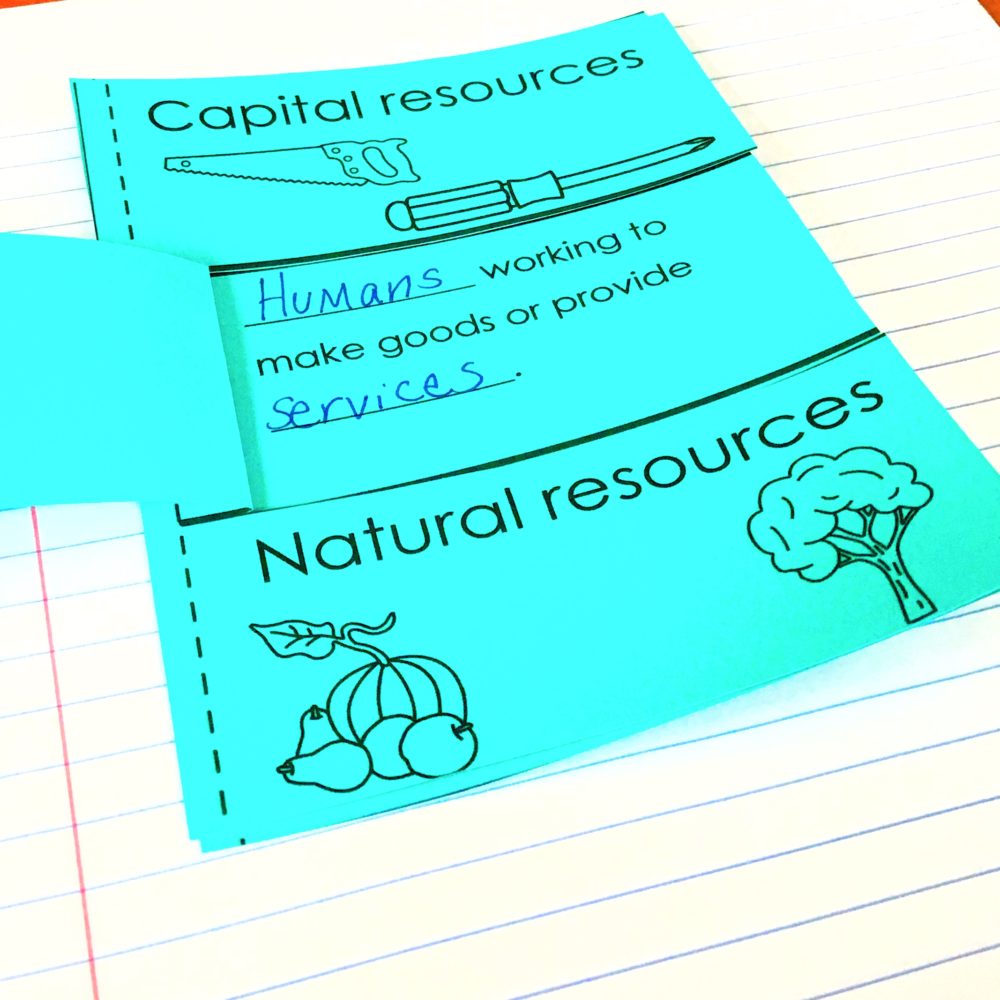
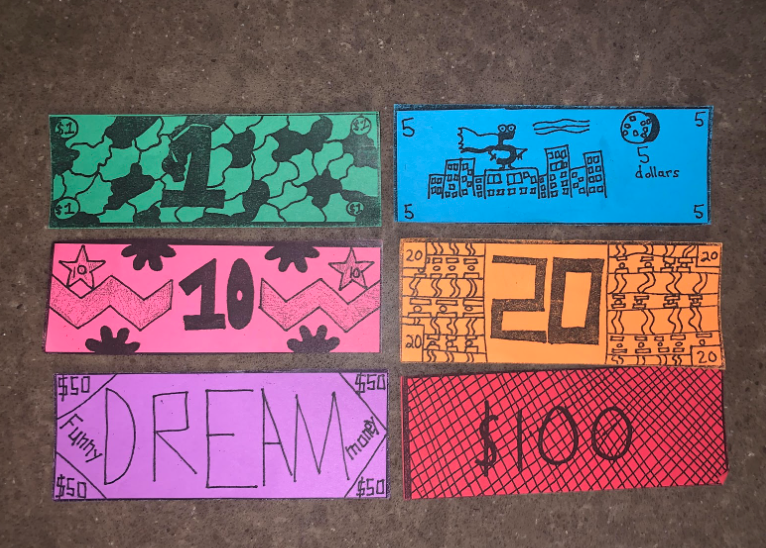
As your students build their foundation of economic concepts, I encourage you to incorporate play money into your classroom. I like to call this play money, “Funny Money.” 🙂
First, I create a dollar bill template for the students to create their own designs for the bills. Usually $1’s, $5’s, $10’s, and $20’s are good amounts to start with. Feel free to incorporate $50’s and $100’s later on in the unit! The only guideline I give the kids before starting their design is that each bill must have the amount written on it somewhere. Once the bill designs are all completed, I have the students vote on which designs they’d like to see used in our classroom economy. *Tip: Make sure the students put their names on the back of their bills before they design them – This will eliminate students voting for their best friend!
Once the designs are voted on, I print each bill in a different colored paper. This does require quite a bit of paper, so be sure you’re communicating with your building’s office before starting this project to make sure it’s okay!
The bills are quite small, roughly 5 inches long and 2 inches wide, so I can typically get around 8 bills on 1 piece of paper. It’s definitely cheaper than buying pre-made money, and it allows the students to have a hand in the designing process.
You can then create your classroom economy by using the money in any area of the day you’d like! I would recommend doing this for about a week, but not using it to promote anything with behavior (I am a huge fan of Responsive Classroom, which doesn’t rely on any sort of rewards. You can read more about aspects of Responsive CLassroom here!).
You can “pay” students for completing assignments or turning in homework (similar to their parents/guardians going to work every day and getting paid), or giving bonuses for awesome behavior or whenever you feel they should be rewarded. On the other side, you can “tax” the students and require them to “pay” you. This concept can also go along with “paying bills.” You can have the students pay for small things they choose to use around the classroom. You could create a “property tax” on their desk.
This helps students understand how currency works, and how so many of the things that we use every day cost and utilize money.
For example, you could charge each student $1 for using a pencil to complete their assignment for the day. If a student then wants to use a pillow or flexible seating option during silent reading time, they have to pay a small amount to use it, as well.
This is a simple way to incorporate the idea behind wants vs. needs.
If you’d rather create a one-time project of a classroom economy, rather than an ongoing money system, a great way to do this is by creating an opportunity for the students to design a product or service they would like to sell to earn money.
An example of a product they could build could be related to the organization. A student may want to build a pencil organizer from basic cardboard or construction paper. A service could be organizing the classroom bookcase or tidying things around the room. This is a great way to discuss cost of supplies and how to make a profit, while also helping the students identify their strengths. I love when a student knows they’re good at something and wants to turn it into a business. 🙂
Allow students to “buy” from each other with the funny money or give them opportunities to spend money that they earn! This is a great way to discuss the concept of bartering, as well as saving and spending. You’ll quickly learn who loves to spend, who loves to save, and who loves to negotiate a good deal. I love seeing their personalities come out!
Speaking from experience, if you’ve ever had a student or class that struggled with your classroom management system, I highly recommend trying out an application system that’s tied to classroom jobs.
We’ve all had the job charts that stick up on the wall for everyone to see and the students know day by day or week by week which job they will be given, but have you ever had your students actually have input on what job they want?
Instead of moving your students’ names each day or each week for them to be assigned a new classroom job, create an application process where they get to apply for the job they want.
You can include on the application areas for them to fill out as to why they want the job or what qualities they have that would make them a good candidate.
You can then incorporate your money system by “paying” the students when they complete their daily job.
It’s amazing how motivated some kids are to know they are getting paid for a job, and how hard they work at it when they know they’re being rewarded for it. 🙂
No matter how you create a classroom economy, have fun with it and make it an experience your students will never forget.
You’re building real-life experiences and these lessons and opportunities will stick with your students forever.
You’re not only teaching economic topics, but you’re building work ethic, social skills, and relationships along the way! Enjoy these 3rd grade economics activities for kids!
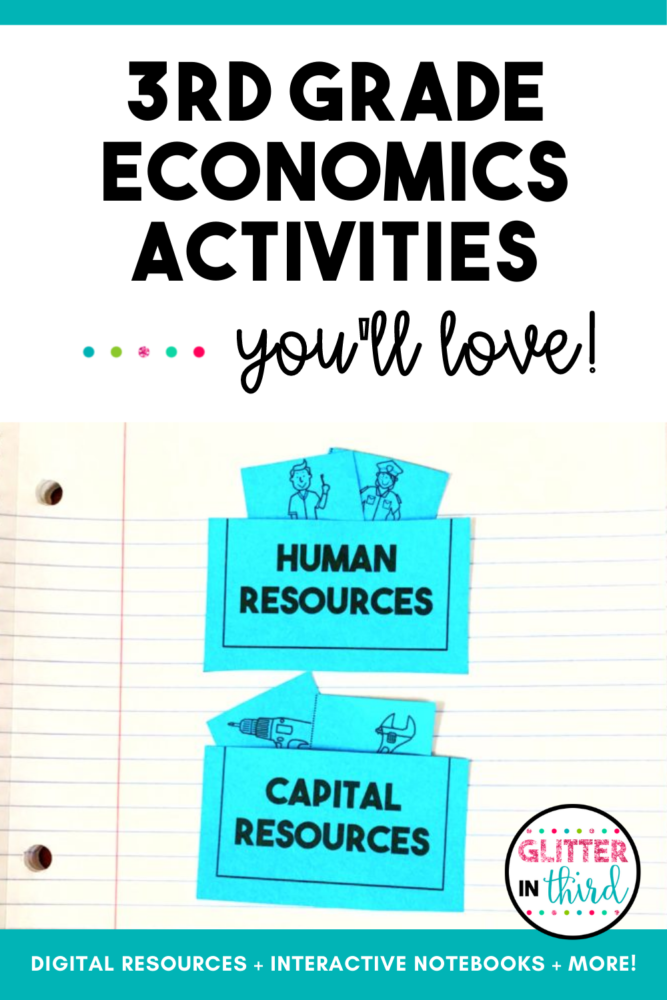

Hey there, I’m Kelly! I I love helping teachers save time with technology and resources so they have more hours in the day to spend with family and friends. Take a look around to find new ideas that you can implement in your classroom today!